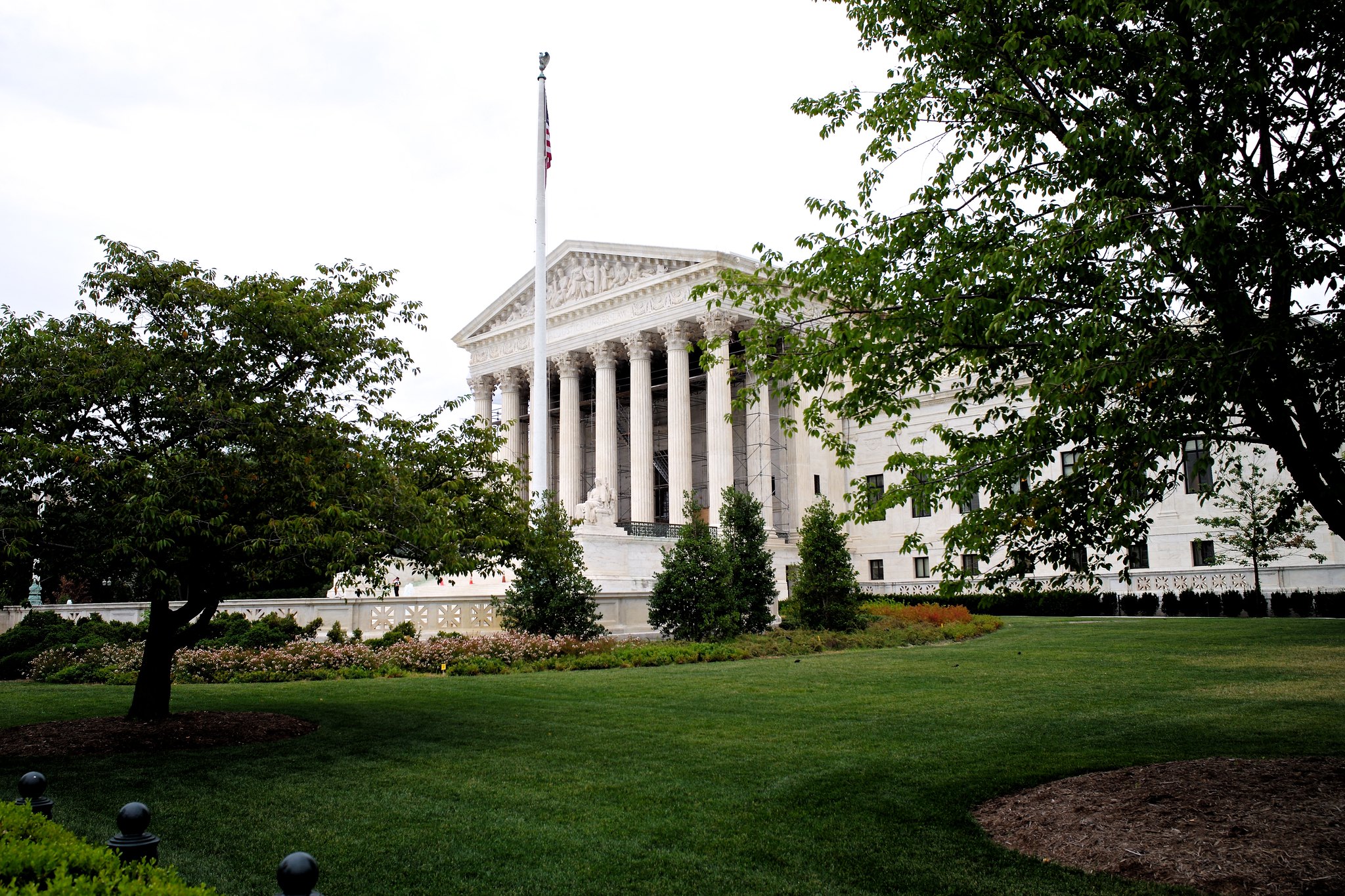United States v. Texas, Explained

Published by The Lawfare Institute
in Cooperation With

Immigration enforcement priorities are back at the Department of Homeland Security (DHS). In a recent 8-1 ruling in United States v. Texas, the Supreme Court held that Texas and Louisiana lacked standing to challenge the agency’s guidance to line-level personnel on how to direct their enforcement efforts. Justice Brett Kavanaugh, writing for the majority, determined that the executive’s vast discretion to choose targets rendered the states’ injuries not cognizable. Justices Neil Gorsuch and Amy Coney Barrett separately concurred in the judgment and viewed the states’ injuries as not redressable. Justice Samuel Alito dissented alone, concluding that the mandatory language of the challenged statutory provisions “left the [e]xecutive with no discretion to refrain from arresting and detaining covered aliens[.]” With over 11 million deportable noncitizens in the United States and the capacity to deport roughly 400,000 per year, enforcement officials have typically used enforcement priorities to organize their efforts. Post-Texas, DHS is free to resume this long-standing practice.
Background
In September 2021, DHS Secretary Alejandro Mayorkas issued a guidance memorandum (Mayorkas memo) establishing new priorities for immigration enforcement. The Mayorkas memo affirmed the executive branch’s broad prosecutorial discretion, including the discretion to apprehend or decline to apprehend a deportable noncitizen in the first instance, in other words, deciding “whether it makes sense to pursue removal at all.” The Mayorkas memo then established civil immigration enforcement priorities, guiding agency personnel to focus enforcement efforts on noncitizens who present a threat to national security or a threat to public safety. It further called on line-level personnel to engage in a nuanced analysis—taking into account, for example, a range of aggravating or mitigating factors, such as the passage of time, the use of a weapon, the impact of removal on the noncitizen’s family, and other factors.
Procedural History
Texas and Louisiana (plaintiffs) challenged the Mayorkas memo as a violation of the Administrative Procedure Act (APA) and the Immigration and Nationality Act (INA). Specifically, the states argued that specific provisions of the INA mandate detention of noncitizens who have committed certain kinds of crimes, such as “aggravated felonies,” and they viewed DHS’s failure to detain all such noncitizens as a violation of the statute. The plaintiffs argued that under the Mayorkas memo, DHS might decline to apprehend someone convicted of a crime that would, under the INA, subject them to mandatory detention. Moreover, the states complained that this failure to apprehend and detain these noncitizens imposed costs on them, including expenditures on health care and education for noncitizens who should have been detained. The district court agreed, issuing a final judgment vacating the Mayorkas memo on June 10, 2022. The U.S. Court of Appeals for the Fifth Circuit later declined to stay the injunction, as did the Supreme Court in an order granting certiorari.
The Supreme Court’s Decision
After full briefing and hearing oral arguments in December 2022, the Supreme Court reversed the district court’s position, finding that Texas and Louisiana had not proved the kind of injury needed to satisfy the requirement of “standing” to bring suit in an Article III court. Although the plaintiffs alleged increased costs due to the release of “criminal aliens” in their jurisdictions, the court determined that this injury was not “legally and judicially cognizable.” It was not cognizable because of the traditional deference accorded to the executive branch’s prosecutorial discretion—which emanates from Article II of the U.S. Constitution. In a previous case decided while on the D.C. Circuit, then-Judge Kavanaugh located the president’s prosecutorial discretion in Article II provisions “including the Executive Power Clause, the Take Care Clause, the Oath of Office Clause, and the Pardon Clause.”
Writing for the majority in the instant case, Justice Kavanaugh noted that challenges to the executive branch’s decision not to prosecute someone typically fail for lack of standing because, in declining to prosecute a third party, the executive does not exercise coercive power over the plaintiff. He further observed that the executive branch lacks the resources to enforce the law against all violators. Faced with resource constraints, the executive must balance a variety of factors and make a judgment call the courts are ill suited to second-guess. In this situation, there is “no law to apply” to evaluate the decision or policy not to prosecute. In addition, Kavanaugh emphasized the lack of historical precedent for the states’ “extraordinarily unusual” claims.
Kavanaugh distinguished a previous state challenge to federal immigration enforcement policy. In 2016, the court left in place a Fifth Circuit decision enjoining an Obama-era policy, Deferred Action for Parents of Americans and Lawful Permanent Residents, or DAPA. That policy sought to shield from deportation some 4 million unauthorized noncitizens whose children were legal permanent residents or U.S. citizens. But Texas successfully sued to enjoin the policy, and it was never implemented. The federal government contested standing in that case, too, but the courts ruled that the financial burdens Texas had alleged were sufficient.
Kavanaugh reasoned that Texas had standing to challenge DAPA because DAPA was not merely a prosecutorial discretion policy. He characterized DAPA as a policy granting “benefits,” namely work authorization. As a result, DAPA differed from the “pure” prosecutorial discretion policy embodied in the Mayorkas memo. Although Texas could challenge the former, it could not challenge the latter.
The 8-1 vote masks the justices’ sharply diverging assessments of standing. Gorsuch and Barrett concurred separately in the judgment alone. Gorsuch determined that the states’ claimed injuries were cognizable but could not be redressed because of INA § 242(f), which the court recently interpreted to bar injunctive relief in cases like this. He further elaborated on his view of the remedial limitations of the APA. Barrett disavowed the majority’s emphasis on executive discretion to resolve the case and determined that a favorable decision would only “speculatively” redress the states’ injuries. In a solo dissent, Alito concluded that the states had satisfied the three-party standing test established in Lujan v. Defenders of Wildlife. Alito further determined that Congress’s use of “shall” in the challenged INA provisions eliminated the executive’s discretion not to detain noncitizens covered by those provisions pending a decision of whether to seek their removal.
Implications
Given the abundant state challenges to federal immigration policy in recent years, the court will likely be called upon to elaborate its standard for state standing. The “special solicitude” toward states suing the federal government did not disturb or overcome the president’s Article II enforcement discretion in this case. And with the continuing litigation over the Deferred Action for Childhood Arrivals policy, or DACA, the court might have to clarify the line between an impermissible challenge to enforcement discretion and a cognizable, redressable injury based on the indirect, downstream effects of enforcement discretion.
Another major issue remains unresolved. Section 706(2) of the APA authorizes courts to “set aside” an unlawful agency action. Like many other courts, the district court in Texas interpreted this provision to authorize it to vacate the Mayorkas memo in its entirety. However, a robust scholarly debate has ensued over whether “set aside” amounts to universal injunctive relief or whether it simply bars an agency from applying the (illegal) policy to the party seeking relief in the specific case before the court. The federal government advanced the latter argument in Texas. The majority had no occasion to reach this issue due to its ruling on standing, but at oral argument, Kavanaugh took issue with the federal government’s position. Citing his experience on the D.C. Circuit, he maintained that “set aside” has “always been understood to mean the—rule’s no longer in place.” But Gorsuch was convinced by more recent arguments that “set aside” does not authorize vacating a rule in its entirety. Accordingly, what remedies are available under the APA remains a wide open question.





